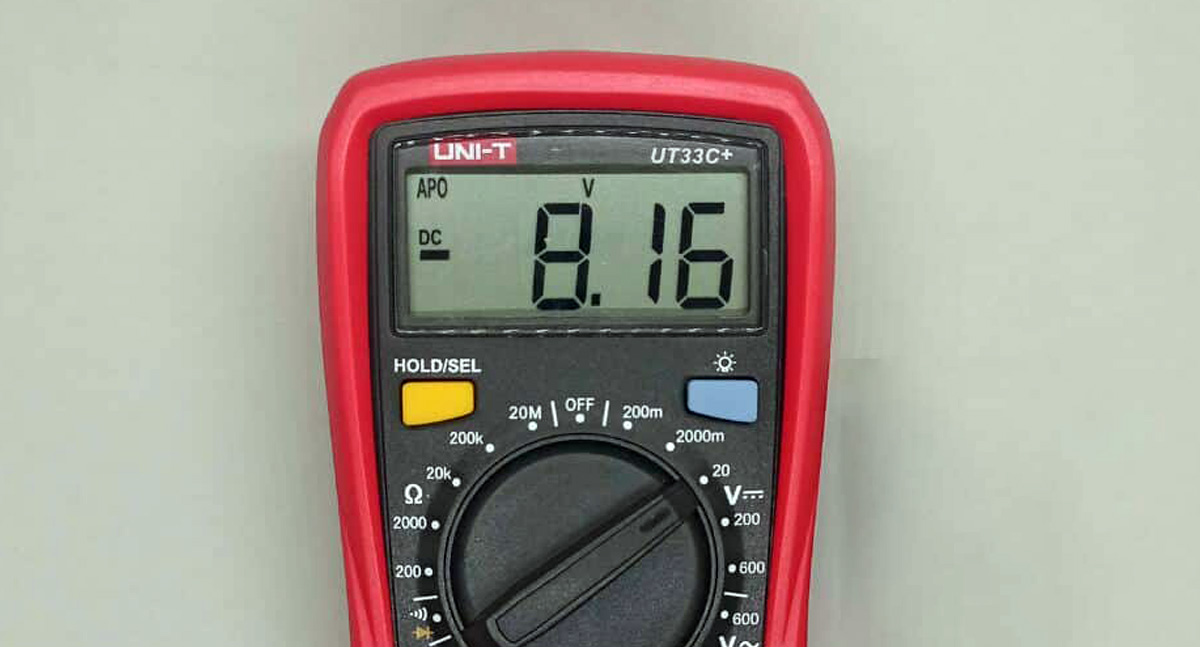If you’re reading this, then you probably have a multimeter and you’re not quite sure what the negative voltage reading means. Don’t worry, you’re not alone! A lot of people don’t know what this reading signifies, but it’s actually very important. In this blog post, we will discuss what a negative voltage is and what it means on your multimeter.
What is voltage?
Voltage is the difference in electric potential between two points. It’s measured in volts (V), and it determines the amount of work that can be done by an electric current. The higher the voltage, the more work that can be done.
Voltage is the measure of potential difference between two points therefore it can be either negative or positive.
Voltage is the measure of how much potential energy a unit of electric charge has, compared to some other arbitrary point. It is not a measure of electric charge.
Voltage is the amount of work, per unit charge, required to move a charge from one location (at rest) to another. You need a certain amount of energy to pull an electron away from a hydrogen atom by 1 meter, for example. The voltage at a certain location is relative to the proton in the hydrogen atom’s nucleus. If you move that electron to a new distance, additional work has to be done and thus the voltage will be higher than it was before, relatively speaking. Though they may have the same amount of charge, different voltages exist. Do not think that voltage is equal to charge!
You can think of voltage like a force. The value of the voltage reading tells you how strong the force is, and the sign (+ or -) shows which direction it’s going in.
Now that we know what voltage is along with some other common electrical terms, let’s talk about what a negative voltage reading means on your multimeter.
What does negative voltage mean?
A negative voltage simply means that there is a potential difference between two points in an electric circuit. This potential difference can be caused by either a direct current (DC) or an alternating current (AC) source. A negative voltage is the measure of the electron potential or energy.
If the voltage at point a with respect to point b is positive, it implies that point a is higher in electric potential than point b. If the voltage at point a with respect to point b is negative, it indicates that point b is really lower in electric potential. The difference in the two electrical potentials’ magnitudes (absolute values) are determined by the magnitude of the voltage.
Imagine you’re measuring the top of a cupboard with a tape measure. You could take a tape measure and determine the distance from the ground to the top of the cupboard. “This cupboard top is 2 metres above the floor.” Now, stand on the top of the cupboard and lower the tape measure to the floor “the floor is 2 metres below the top of the cupboard”. The negative sign is just a convention; in essence, whatever way you measure it, it has the same height. Flip your multimeter leads and the negative sign will go away.
So what does this mean for your multimeter?
If you’re taking a DC voltage measurement, then a negative voltage reading simply means that the point you’re measuring is lower than the point of reference. On the other hand, if you’re taking an AC voltage measurement, then a negative voltage reading means that the point you’re measuring is higher than the point of reference.
In either case, it’s important to pay attention to the sign of your voltage readings. A positive voltage reading means that the point you’re measuring is higher than the point of reference, while a negative voltage reading means that the point you’re measuring is lower than the point of reference.
Thus, if you see a negative voltage reading on your multimeter, don’t panic! It simply means that the point you’re measuring is lower than the point of reference. Just be sure to pay attention to the sign of your voltage readings so that you can properly interpret the results.
Can you get negative voltage?
Yes, it is possible to get a negative voltage. However, it is important to remember that voltage is a relative quantity. This means that a negative voltage reading simply means that the point you’re measuring is lower than the point of reference.
It is important to acknowledge that voltage and current are relative. As an example, if you have a battery with two terminals, + and -, the positive terminal has a positive voltage that is relative to the negative terminal. Likewise, the negative terminal has a negative voltage that is relative to the positive terminal. Two batteries that are in the same series can actually split their supply where the 0V is in between two batteries so in essence the positive terminal takes from the + on a battery whilst taking the – on the other battery negative terminal.
We hope that this blog post has helped clear up any confusion regarding negative voltage readings on multimeters. If you have any further questions and want to talk to a licensed electrician, please don’t hesitate to contact us. We would be more than happy to help.


